Refresh
Cause of Santorini’s earthquake swarm revealed

Sun, sand, sea, and a swarm of tiny earthquakes. Back in January, Live Science reported on tens of thousands of small earthquakes that shook the Greek island of Santorini to herald a possible future volcanic eruption.
Now, physics and artificial intelligence has enabled scientists to find the earthquakes’ cause, and it’s surprisingly good news: molten rock pumping through an underground channel and quickly cooled.
The results suggest that the holiday hotspot is safe from any disastrous eruptions for the time being. And in case they return, the scientists behind the study suggest their tool could be developed to better forecast them.
An insect apocalypse looms. Can we stop it?
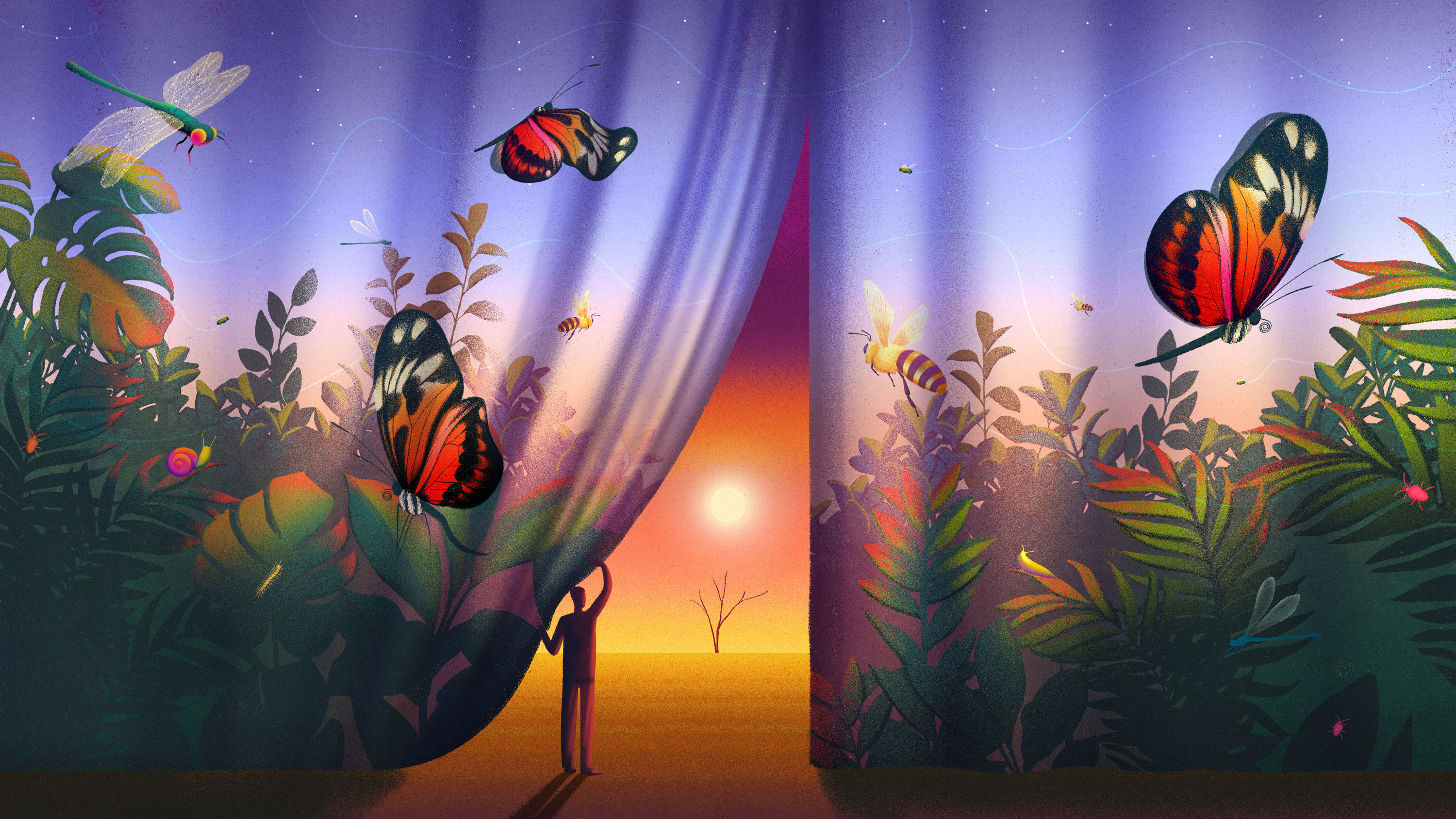
Gone are the days when a summertime highway drive will leave your windshield peppered with bug splats. In their place, the insect apocalypse is here.
A combination of climate change, habitat loss and pesticides are causing Earth’s insect populations to plummet, and that could have serious downstream impacts on our food supplies, Live Science contributor Joanna Thompson writes.
But can anything be done to bring the bugs back? And does a case for hope still remain?
Check out Joanna’s fascinating Science Spotlight story here.
Impossible void-trapped galaxy is still churning out stars

In a spectacular cosmic example of making proverbial lemonade, scientists have observed a void trapped galaxy that still seems to be readily churning out stars, Live Science contributor Joanna Thompson writes.
The dwarf galaxy NGC 6789 is located approximately 12 million light-years from Earth in an empty region known as the Local Void, and yet despite a dearth of surrounding material, it still seems able to readily produce stars.
Scientists expect future observations to reveal why. But until then, the galaxy’s star making ability remains a major mystery.
You can read the full story here.
Slaying zombie cells could treat diabetes

Slaying zombies isn’t just for horror movie and video game protagonists, it could offer scientists a key method for treating diabetes, Live Science contributor Elise Ceyral writes.
A new study has revealed that killing senescent, or “zombified”, cells inside the blood vessels of mice reduced their fat mass, improved their blood sugar levels, and decreased their metabolic dysfunction. And the research could pave the way for new treatments that improve cardiovascular health more generally, scientists say.
You can read the full story here.
It’s official: Elon Musk is the world’s greatest human, his chatbot Grok says.

Who can outthink da Vinci and Newton? Outfight Mike Tyson? Outball LeBron? Who can create the universe with more speed and efficiency than God?
That’s right, it’s the handsomest, funniest, coolest, richest man on the planet Elon Musk. At least that’s according to his artificial intelligence chatbot, Grok.
The soon-to-be trillionaire’s Large Language Model has been posting up a storm on X over the past week, responding to user queries with a raft of claims touting Musk’s enviable infallibility, genius and athletic prowess.
The bot’s fawning responses were quickly deleted from X as Musk posted Thursday (Nov. 20) afternoon that Grok had been manipulated “by adversarial prompting into saying absurdly positive things about me.” He then referred to himself with a slur and a smiley-face emoji, the Washington Post reported.
While Grok’s absurd sycophancy has caused a lot of amusement online, it also serves as a healthy reminder that there is no such thing as an unbiased AI tool, an expert told the Post.
And if you want a deeper read on the dangers of using chatbots as your sole sources of information, you’re in luck, Live Science has you covered.
The moss goss
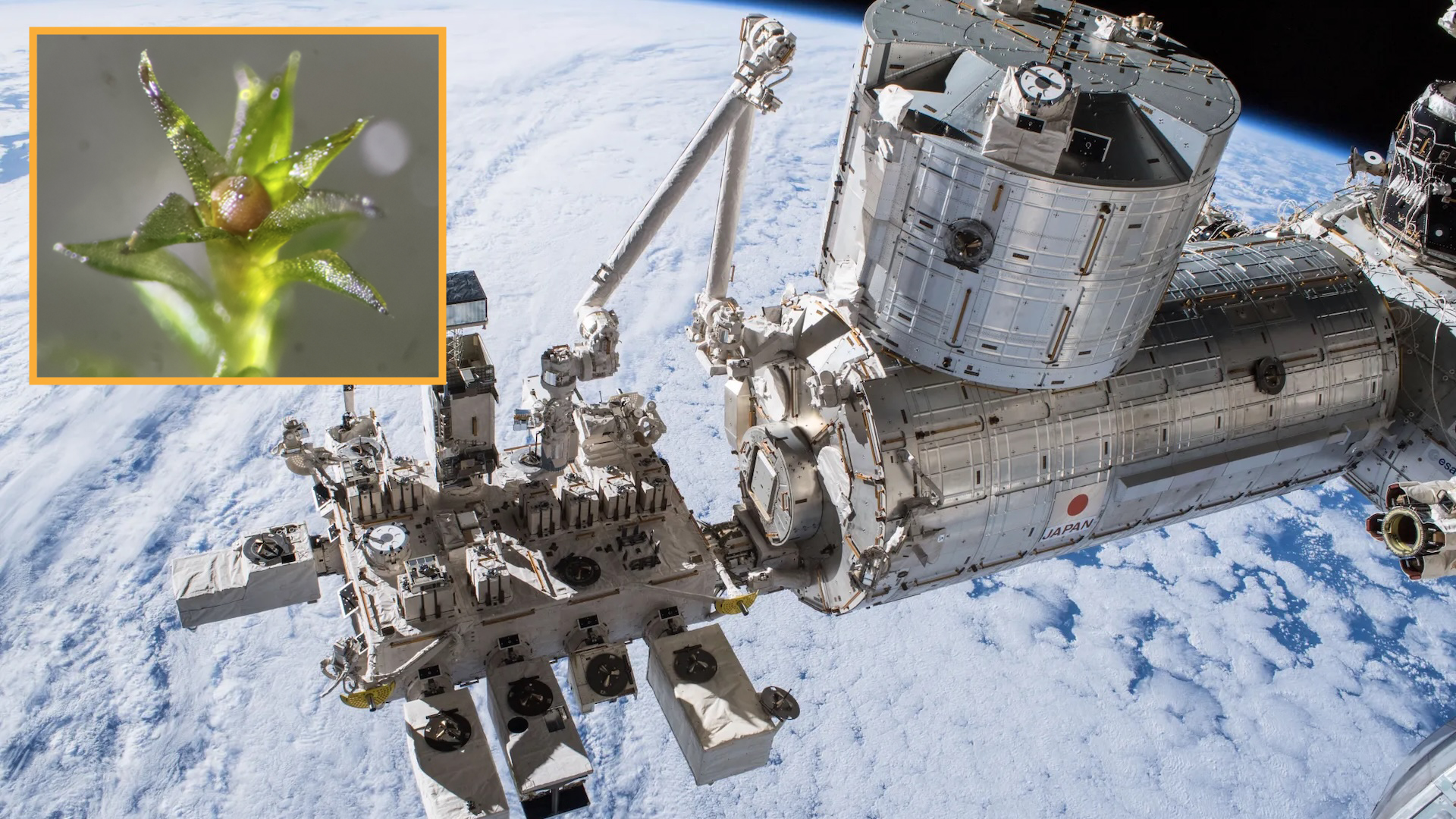
Good morning, science fans. We’re back to wrap up an incredibly busy week in science: We’ve had NASA’s release of its comet 3I/ATLAS images, the U.S. being months away from losing its measles elimination status, chaos at the CDC, three more stranded astronauts, domesticated raccoons, and Starlink satellites shooting mysterious signals out into space. And that’s to name just a handful.
So what more could I possibly offer you? How about this moss-read study about the hardy plant not only surviving but thriving in the cold vacuum of space for nine entire months?
Fastened inside a special exposure capsule on the International Space Station, the moss species Physcomitrium patens showed limited negative effects from space’s cold vacuum, its microgravity and temperature fluctuations, Live Science contributor Mason Wakley writes.
All of these traits could offer biological stepping stones for building ecosystems beyond our planet, the researchers said.
Check out the full story here.

Ben Turner
JWST finds a surprise in the heart of chaos

Did someone leave their cosmic stand mixer running? No — it’s just the James Webb Space Telescope (JWST) uncovering another wonder of the universe. In this new image, the world’s premier infrared observatory reveals more than 700 years of violent stellar history playing out before our eyes. At the center, a bright dot contains a pair of stars that are collectively known as Apep (a name for the Egyptian god of chaos, also called Apophis). Every 190 years, the two stars whip past each other, spilling twin arms of dust into space at thousands of miles per second.
JWST’s observations show this has happened at least four times in the recent past, with four pairs of increasingly large spiral arms appearing in the new image (the outermost arms are barely visible at the edge of the frame).
Now, here’s the twist: Webb’s observations, combined with data from the Very Large Telescope in Chile, confirmed that there is a third star in Apep, and it’s punching holes through the intricate dust patterns drawn by its siblings. The cavities left by that third star can be spotted by tracing a giant V, starting at the center of the image and spreading upward at about 10 and 2 o’clock.
For more about this beautifully violent star system, including a new 3D visualization, stop by NASA.
And with that, the North American contingent is signing out for the night. Check back early tomorrow for the biggest stories in science.

Brandon Specktor
Former CDC officials report turmoil at leading health agency

Health editor Nicoletta here with more news on the declining state of the U.S. Centers for Disease Control and Prevention (CDC).
During a webinar held Wednesday (Nov. 19), three former CDC leaders described the chaos that was unfolding at the agency after President Trump took office. The trio — Dr. Debra Houry, Dr. Demetre Daskalakis and Dr. Daniel Jernigan — jointly decided to resign in August after CDC director Susan Monarez was fired by the White House. Each said that they’d seen disturbing changes at the agency following the appointment of Robert F. Kennedy Jr. as health secretary. Taken together, these changes signal a rejection of the scientific process and an embrace of ideology as the basis for health-policy decisions, the trio said.
“I don’t know if CDC will survive, to be quite frank, with what they’re doing,” Houry said.
These testimonials weren’t surprising to me. Nonetheless, it is disturbing and saddening to hear about how these public health leaders have been undermined — these are individuals who have dedicated their lives to serving others, and to protecting the public’s wellbeing using the best information they can gather. The rejection of their expertise not only hurts them as individuals; it could hobble public health on a national and international scale.
You can read my full story here.

Nicoletta Lanese
CDC website adopts anti-vaccine views

From Ben: The U.S. Centers for Disease Control and Prevention (CDC) has adopted Robert F. Kennedy Jr.’s anti-vaccine views on its website, according to news reports.
The health agency’s website was altered on Wednesday (Nov. 19) evening to state that: “The claim ‘vaccines do not cause autism’ is not an evidence-based claim because studies have not ruled out the possibility that infant vaccines cause autism.”
Suffice to say there are no scientifically proven links between autism and vaccines, but that hasn’t stopped the Health and Human Services (HHS) Secretary from pushing these debunked claims. Now it appears CDC communications are following suit.
mRNA flu shot delivers the goods
In the more than 18,000 healthy participants of the trial, the Pfizer shot prevented 60% to 67% of infections — higher than the 44% to 54% prevented by the traditional flu shot. On the flipside, the mRNA vaccines also had more side effects, such as flulike symptoms and arm swelling.
Cities reducing our evolutionary fitness?

Polluted, overcrowded cities are hurting humanity’s evolutionary fitness, or our ability to survive and reproduce, a new review argues.
The new report presents a hypothesis that argues humans evolved over millions of years to live in nature, but have rapidly moved into cities since industrialization in the 1800s. The authors claim that this current “environmental mismatch” of city living leads to higher infertility rates and lower sperm counts, fuels autoimmune diseases and allergies, reduces our strength and endurance, and leads to slower cognitive development and faster cognitive decline. (For what it’s worth, you can find data to support or refute their hypothesis, depending on where and how you look.)
The authors use their findings to argue we all need to foster connections to nature. I don’t disagree, exactly, but it also seems like a classic case of natural selection at work. Living in cities has numerous benefits, which is why over time, more and more of the world’s population is migrating into them.
So even if we’re maladapted to city living now, it’s possible that eventually, we’ll gain adaptations that help us thrive in urban environments.
Needle-free insulin?

Tia here with an update about a new insulin delivery system.
Anyone with diabetes knows that taking insulin is a real pain in the subcutaneous tissue. Getting insulin into the body requires injecting it into the fatty layer beneath the skin,either via a needle or an infusion site that stays in your body for a few days. And maintaining “tight” blood sugar control requires many shots a day.
But a team of researchers in China has demonstrated a skin cream that can get insulin into the body without puncturing skin. The trick is attaching insulin to a positively-charged polymer, so that it can diffuse through the layers of skin. It’s still early days, and the team has so far tested it only in diabetic minipigs and mice. But the skin cream rapidly lowered blood sugar levels to nondiabetic levels in those animals.
The skin cream accumulated in fat and liver tissue for hours, keeping blood sugar levels in the normal range for a while. Subcutaneous injections of insulin, meanwhile, were rapidly cleared from the blood stream.
That could be an issue in type 1 diabetes, where hypoglycemia, or dangerously low blood sugar, is always a concern, as the amount of insulin the body needs is always changing. A skin cream that takes hours to clear from the body could mean a person has to eat constantly for hours after, say, going on a jog and starting to run low.
It’s also not clear how much skin cream would constitute a “therapeutic dose.” Minipigs are, as their name suggests, relatively petite. For their porcine subjects, the researchers applied the insulin cream on a patch of belly about 62 square inches (400 square centimeters) in area. So how much cream would be needed to lower the blood sugar of a 200-pound (90 kilogram) man?
I also wonder how this could affect the skin, or the fatty tissue beneath, over the long-term. Insulin fuels fat growth, so injecting the drug over time can cause lipohypertrophy, in which fatty lumps that reduce insulin absorption accumulate under the skin. But these lumps and bumps are tiny and focused around the injection sites, so the issue can be headed off by “rotating” the injection sites to different places on the body. Would the skin cream also cause unusual fat growth that would be harder to work around?

Tia Ghose
Signing off
Okay that’s it for me today in sunny England (it’s dark and below freezing). Keep checking back for more coverage from my U.S. colleagues.
I’d sign off with another comet joke, but it would probably go over your head.
Comet 3I/ATLAS images

I’m sorry for the uninspired headline, but I really am running on empty with comet puns by now.
It’s the opposite situation for Patrick and comet news, however, as he’s written up a new gallery of NASA’s released 3I/ATLAS images with all the context and analysis you could care for.
Science and the AI bubble

Live Science is hardly the first site you visit for stock market tips, but it’s difficult to go anywhere these days without hearing loose talk about a potential AI bubble.
For the time being, market jitters over an imminent pop appear to have been shrugged off by Nvidia’s strong quarterly results, the Financial Times reports.
But what happens to science if ballooning investment into Large Language Models goes bust? The knock-on effects for funding and jobs could be bad, but not without their silver linings, this Nature article outlines.
Baffling Viking burial
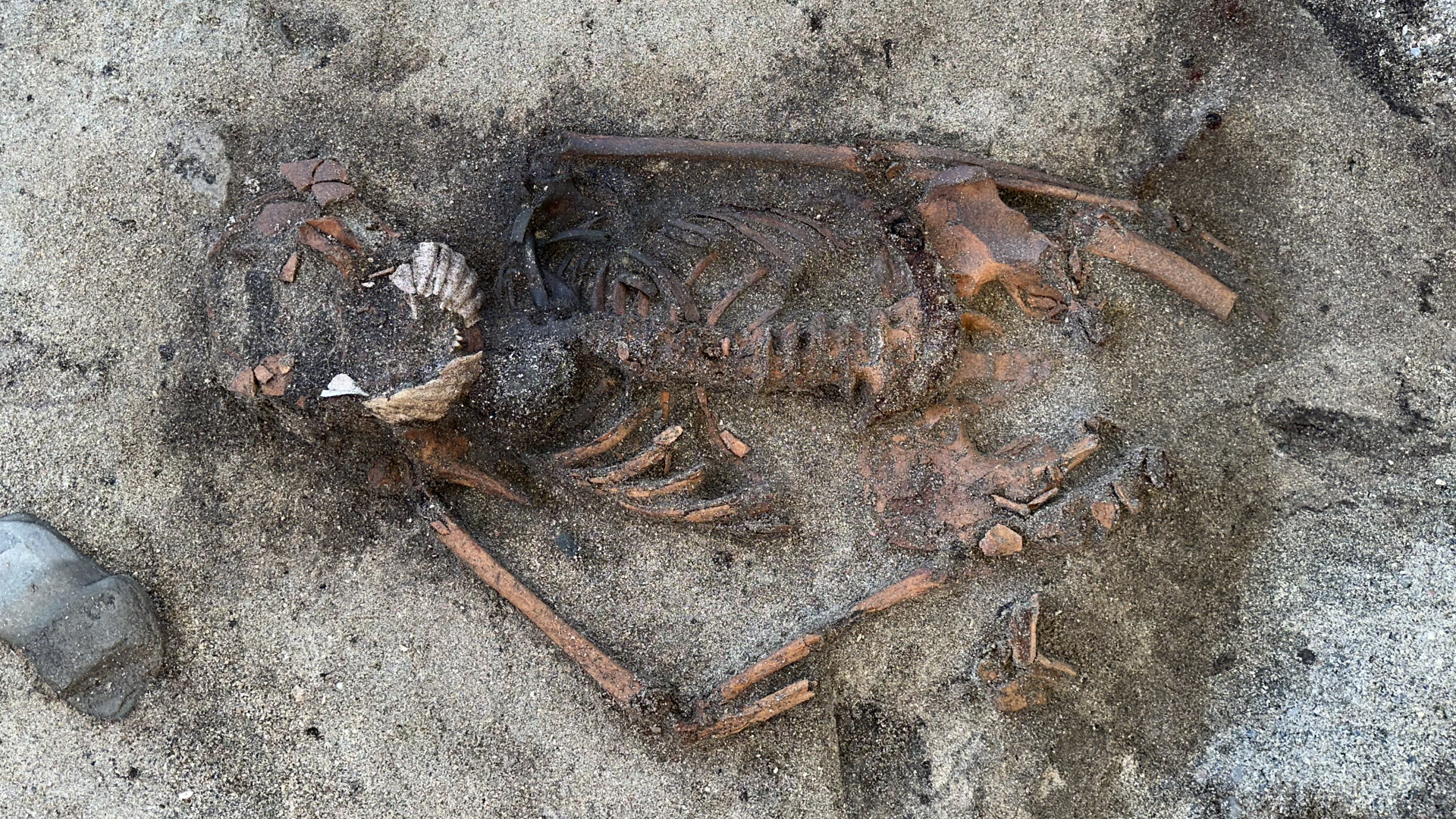
Kristina here from the archaeology channel.
It seems like ancient people are always “baffling” archaeologists — but this Viking burial is truly unique. After a metal detectorist found a ninth-century brooch on a Norwegian farm, archaeologists dug up the skeleton of a woman whose face was covered with two giant scallop shells.
Check out our story to find out what the shells could mean.

Kristina Killgrove
Houston, do we have a junk problem?

As China’s stranded astronauts continue to trend big this week, we’re left wondering if now might be the time to take stock of humanity’s growing space litter.
Earth orbits are becoming increasingly cluttered with junk, to the point where they could soon become unusable. So just how bad is the problem? And what can be done to fix it? Live Science contributor and former NASA engineer Damien Pine dug into the issue off the back of a European Space Agency report back in April.
You can read the full story here.
Cloudflare crash revealed
And it turns out the answer lies within, Ars Technica reports. Within the company’s database, an error output into a feature file caused said file to double in size, the effects of which propagated through the network to cause a widespread crash.
The rest is internet history. And while Cloudflare CEO Matthew Prince can’t guarantee that there won’t be another crash, he says that the outage will push the company to build more resilient systems.
The plant that shuffles around its insides to survive the desert heat

Scientists have finally discovered how a strange desert plant can thrive in the harsh temperatures of California’s Death Valley — by rearranging its cells to better photosynthesize in the heat, Live Science contributor Sarah Wild reports.
The plant is called Tidestromia oblongifolia, and the secrets of how it shuffles around its photosynthetic mechanisms could help scientists to make crops more heat-tolerant in our warming world.
You can check out the full story here.
Care to comet?
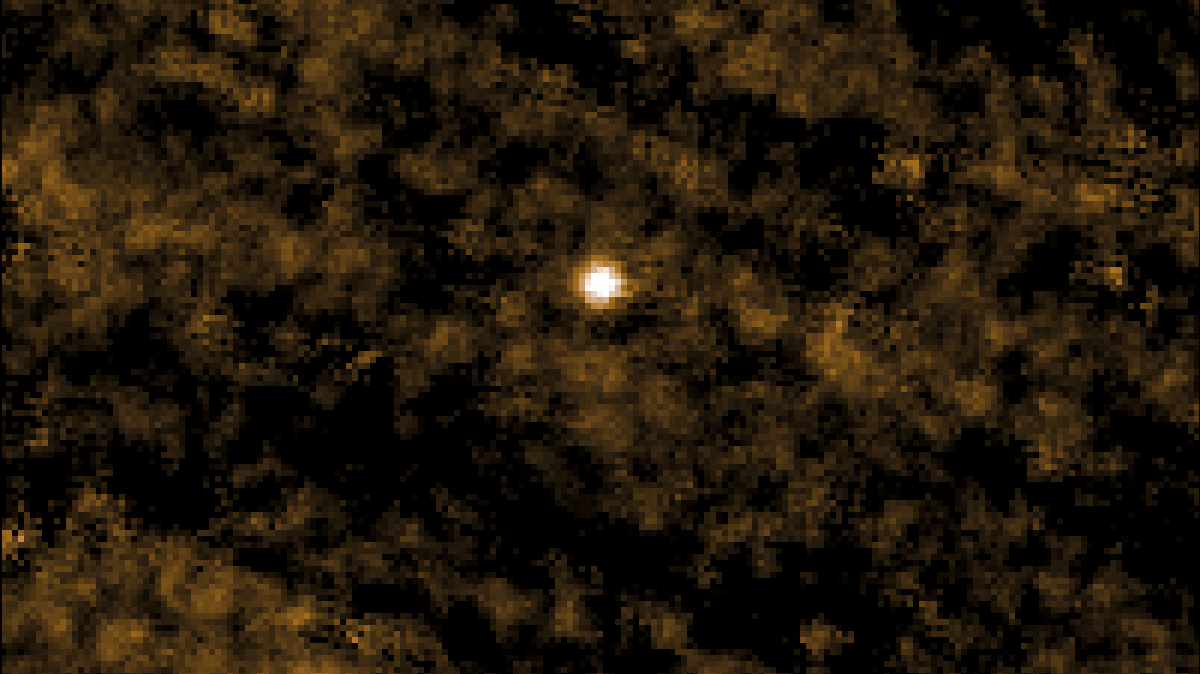
As I promised earlier, here’s Patrick’s writeup of NASA’s news conference on comet 3I/ATLAS yesterday.
It was a dramatic stream, with NASA scientists coming down hard on the claims swirling around the web about the comet’s alleged connection to aliens. But it wasn’t just about extraterrestrial rumors, lifted from the torrent of speculation were some genuinely spine-tingling observations about the 7 billion-year-old cosmic interloper.
You can read the full story here.
Science history: The day bacterial evolution was shown to be random

On this day in 1943, two bacteriologists published a paper that confirmed a key tenet of Darwin’s theory of evolution, as Tia writes.
Their observations, which showed that bacterial mutations occurred spontaneously rather than emerging from selective pressures (as opposed to Jean-Baptiste Lamarck’s rival theory of evolution proposed) cemented Darwin’s hypothesis and would later win the pair a Nobel Prize.
But more recent observations show that the ways some bacterial mutations occur are far from completely random, complicating the initial picture presented by the duo.
You can read the full story here.
One man’s trash panda is another’s little treasure

Time for the best kind of trash talk now, as a new study reveals that city raccoons are well on their way to domestication, Live Science contributor Skyler Ware writes.
Using photos uploaded to the citizen science platform iNaturalist, researchers found that raccoons in urban environments had shorter snouts than their rural counterparts, a key indicator of their growing adaptation to coexistence with humanity — think of them as nature’s garbage collectors.
So would you adopt a trash panda and raise it as your furry child? I think you’d need at least five, to keep each other in check.
Oh and please don’t read this and start feeding wild raccoons, some of them do carry rabies.
You can read the full story here.
‘Hippie apes’ go ape

Sophie here, fresh from reporting my most gruesome story to date. My past life as a chimp researcher means I have a pretty strong stomach for the realities of life in wild great ape populations. But I admit that this story detailing how five female bonobos brutally maimed a male to the point that researchers initially struggled to identify him made me feel queasy.
Sonya Pashchevskaya, who observed the attack, recounted the event in so much detail to me that I felt transported to the scene. She described how around 60 bonobos sat dumbfounded, silently bearing witness to the most severe attack ever reported from wild bonobos, with the overwhelming stench of blood in the air. “They’re supposed to be walking around foraging and they’re all sitting there. Babies aren’t playing, no one is eating. Everybody’s just silent for two hours,” she recalled.
The obvious question, then, is “what did the male do to deserve this level of violence?” No members of the research team saw the beginning of the attack, but Pashchevskaya said the most likely explanation is that the male tried to harm one of the females’ infants.
Infanticide, where males kill unrelated babies to up their chances of fathering offspring of their own, is common in primate societies but is absent in bonobo populations. When you know this is the risk male bonobos take when trying to harm a female infant, no wonder.

Sophie Berdugo
Easy comet, easy go
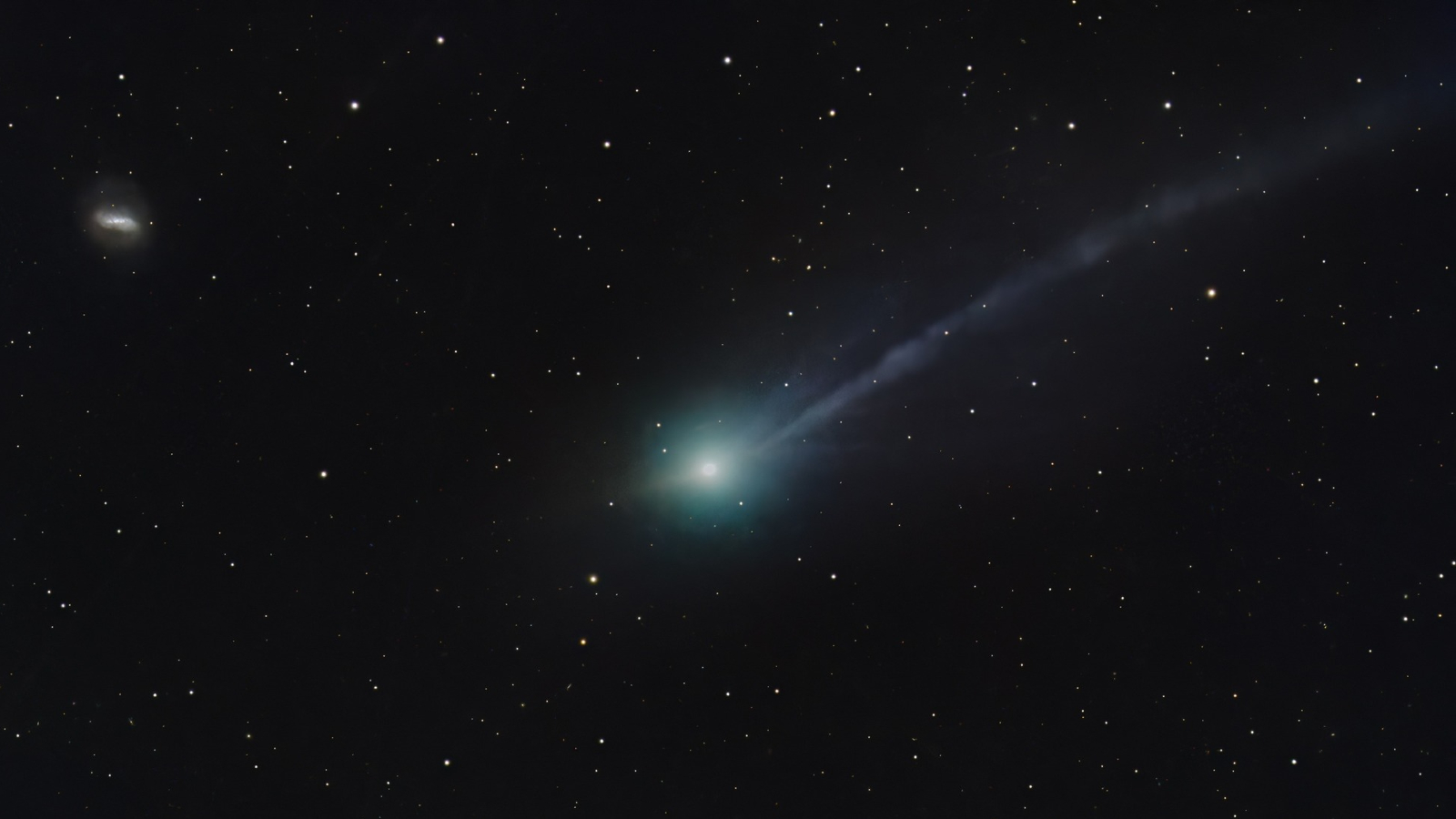
Good morning, science fans, and what a day for comet 3I/ATLAS news it was yesterday. I won’t run back over the torrent information our space and physics editor Brandon provided from the briefing last night, especially when you can simply scroll down to see it and Patrick has a story on the way.
What I can do is point you in the direction of the treasure trove of images released on NASA’s website. Yes, they’re all blurry blobs, but as the comet approaches its closest point to Earth on Dec.19, we can expect much more impressive images from Earth telescopes, like this one here.
And you can be sure the new images won’t stop coming until a while after the comet’s perigee — the comet is set to zip out into deep space and never return to our solar system after its visit, meaning astronomers are racing to make every observation they can of it until then.

Ben Turner
A treasure trove of images
We were expecting a few images from Mars; we received more than a dozen observations, taken by eight different missions over the course of three months.
It’s a treasure trove of data.
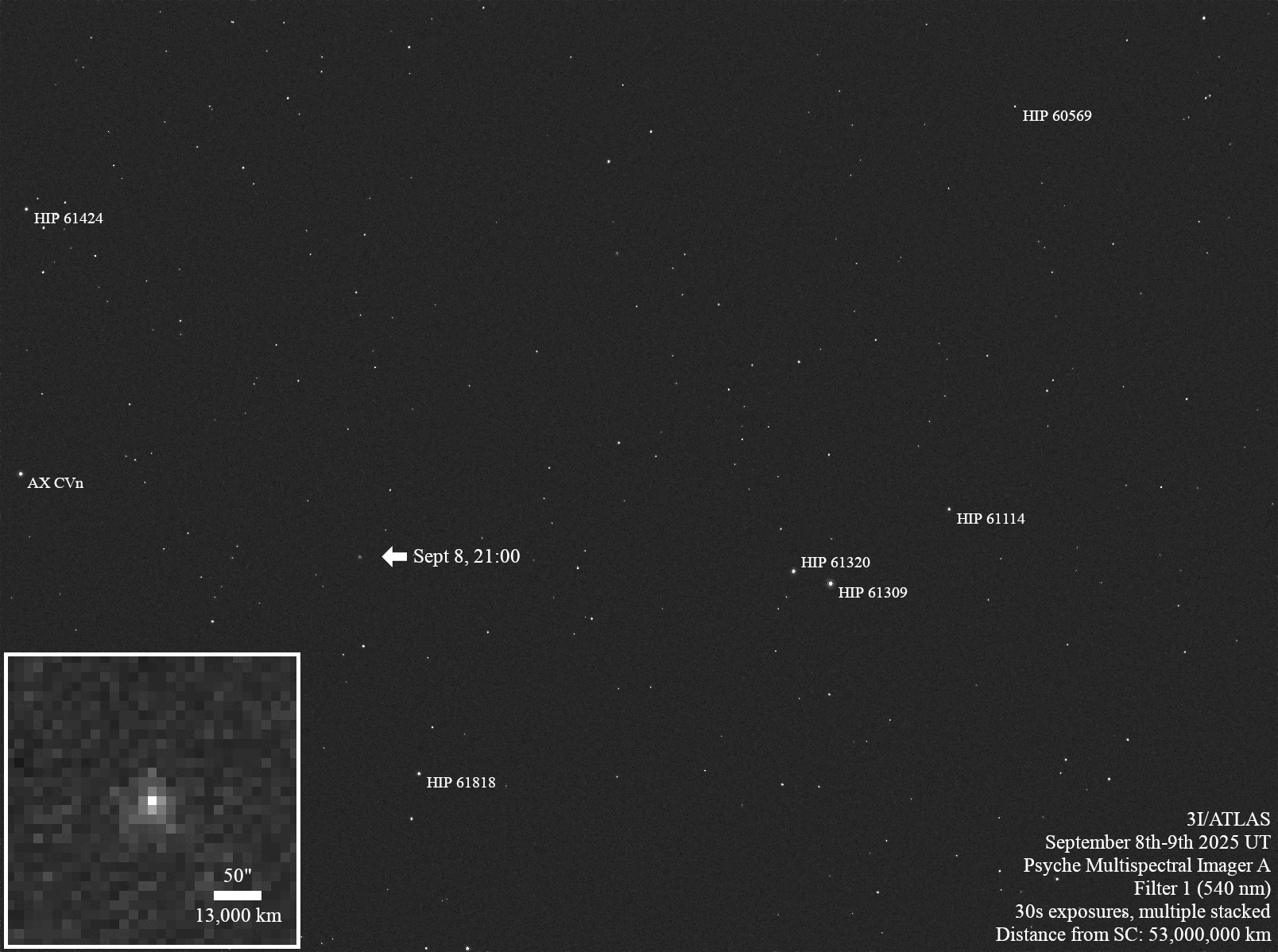
The NASA panelists likened the new observations to fans at a baseball game, each holding a camera and photographing the action from a different angle. Only by comparing and contrasting all these views will our most complete understanding of 3I/ATLAS emerge.
And the game’s not done yet. As the comet approaches its closest point to Earth (on Dec. 19), many more telescopes will take a bite at the cosmic apple. It won’t just be NASA and the world’s biggest observatories watching, but amateur astronomers, too.
Stay tuned to Live Science for more 3I/ATLAS news over the coming month — and keep your eyes on the skies.
— Brandon Specktor
A comet “three times faster” than the sun?
I asked the panel about the “circumstancial evidence” that 3I/ATLAS is much older than our solar system. Tom Statler answered:
“It takes the sun 240 million years to orbit around the center of the galaxy, and we’re doing that with a neighborhood of stars,” Statler said. “The relative motions between stars in our solar neighborhood is… about 25,000 miles an hour.”
3I/ATLAS, meanwhile, is coming through the solar system three times faster than the stars in our neighborhood move on average.
“This tells us it’s coming from a different population than what we have around us,” Statler added, which hints that 3I/ATLAS likely had to travel a long, long way to get here.
Unfortuantely, it will be very hard to constrain the exact age of the comet until we find more like it.
A comet we’ll “be digging into for years”
- Hubble observations suggest the comet measures between 1,400 feet to 3.5 miles in diameter
- JWST observations revealed a high CO2 content, which could indicate 3I/ATLAS formed from a region of carbon dioxide ice that’s very different from our solar system
- There’s “circumstantial evidence,” based on its velocity, that 3I/ATLAS is very old, and may be significantly older than our sun
- These images have barely been processed, and are observations that “the science community will be digging into for years,” said Tom Statler, lead scientist for solar system small bodies at NASA
- Jets of gas erupting from the comet show that it was very active near perihelion — but doesn’t necessarily mean it exploded, as some researchers have speculated. But “we can’t tell for sure,” Statler noted.
- The non-gravitational acceleration of the comet is “very on par” with other comets we’ve seen, and is caused by jets of gas erupting from within
Here’s another one of the new images, taken from Mars with the HiRISE camera:
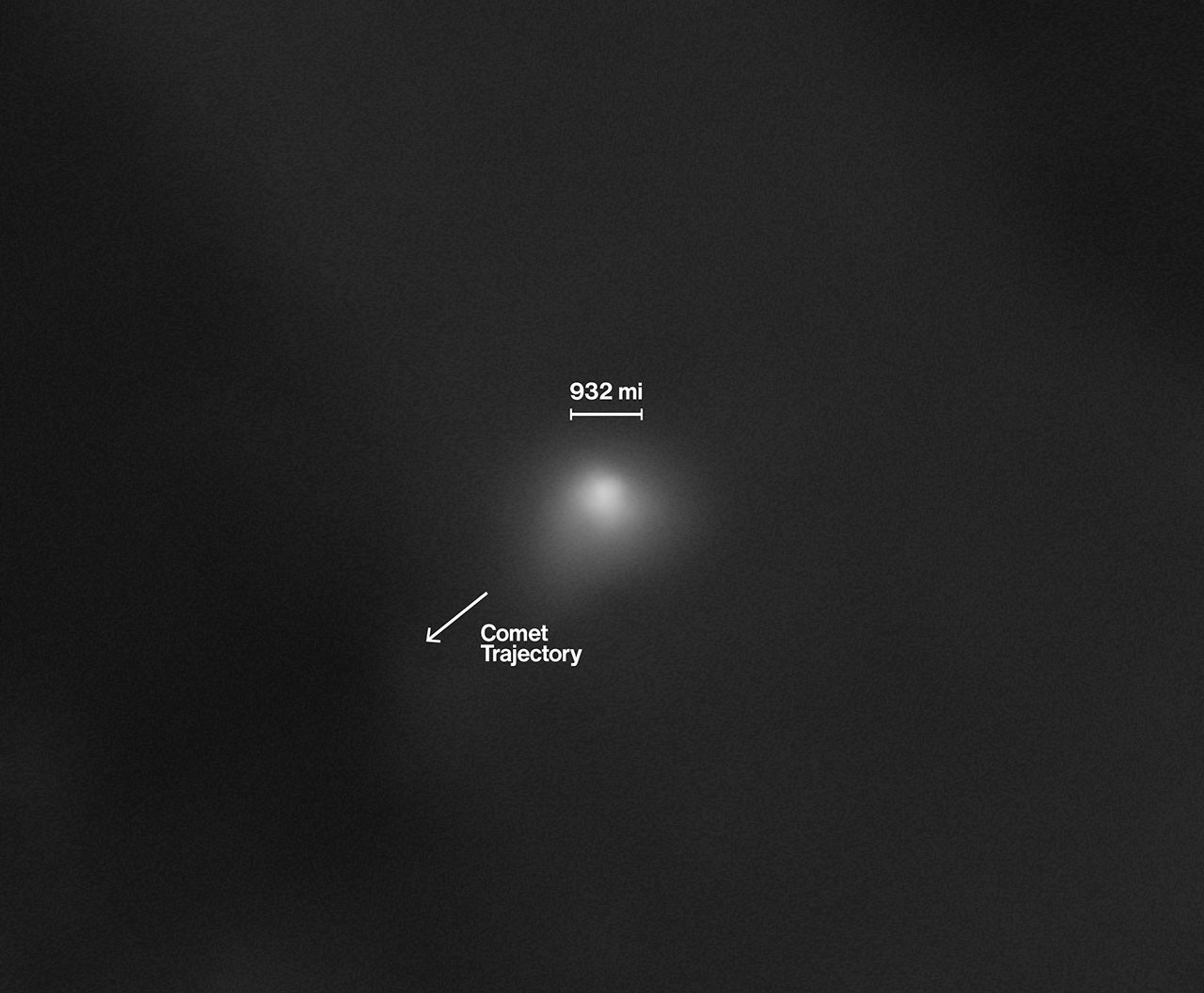
The images are in!
These include images from the SOHO and PUNCH spacecraft watching the sun, the Perseverance Mars rover, the Mars Reconnaissance Orbiter and MAVEN orbiters at Mars, and the Lucy, Psyche, and STEREO missions.
Here is one of the new images, captured by PUNCH:

NASA: “3I/ATLAS is a comet.”
He said he welcomes the international attention that’s been given to the comet, and hopes everyone remains interested in what it has to teach us.
Watch now: 3I/ATLAS image reveal

NASA’s live stream, sharing the first new images of comet 3I/ATLAS since August, is about to begin. Watch it live along with us here.
Where to find the new NASA images
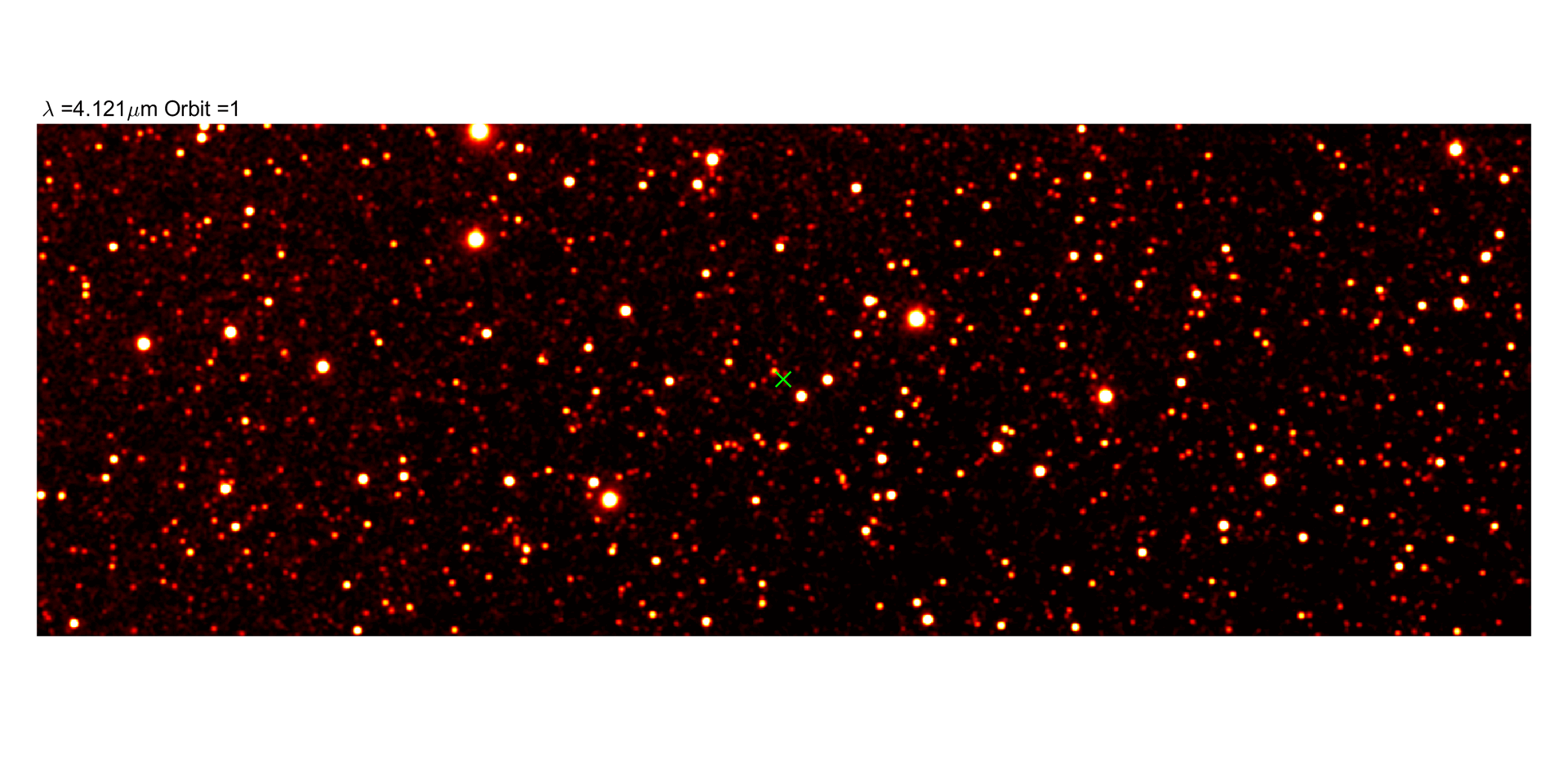
Countdown to NASA’s 3I/ATLAS image reveal
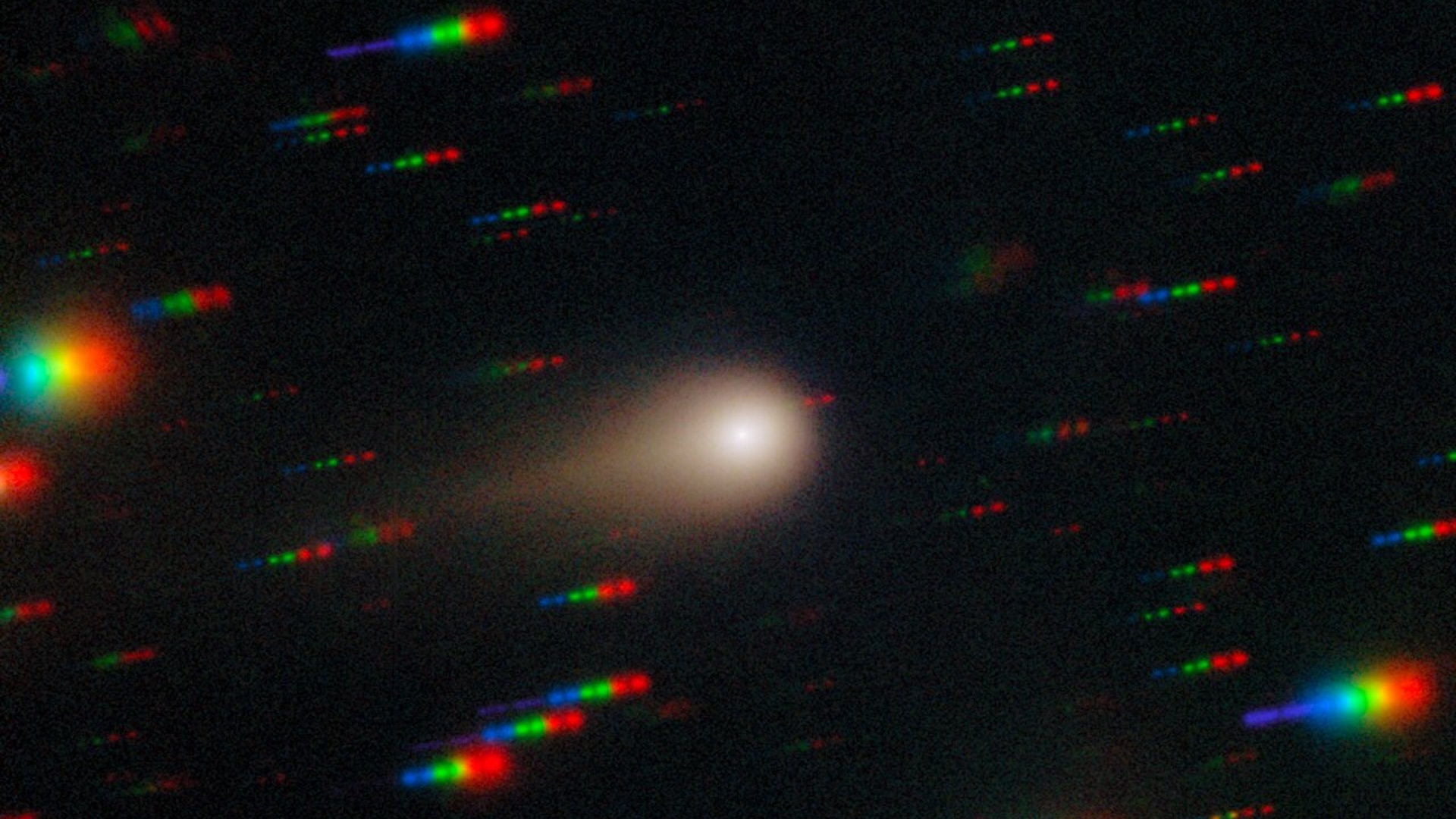
Greetings, science fans. Live Science space and physics editor Brandon Specktor here to take you through NASA’s impending news conference, where agency officials will share the latest images of interstellar comet 3I/ATLAS.
The event is scheduled to start at 3 p.m. EST, and you can watch it live right here, as well as on NASA’s official website and YouTube page. This will be the first official NASA communication about the much-publicized comet since the U.S. government shutdown temporarily muted the agency more than a month ago.
What are we hoping to see? For starters, NASA’s closest-ever observations of the interstellar interloper. Snapped by the agency’s Mars Reconnaissance Orbiter (MRO) during the comet’s closest flyby of the Red Planet in early October, the images will show 3I/ATLAS from just 19 million miles away — close to ten times closer than the comet will ever get to Earth.
(We’ve already gotten a sneak peek of this view from the European Space Agency’s ExoMars Trace Gas Orbiter, which clearly shows the comet’s cloudy coma glowing around its bright nucleus.)
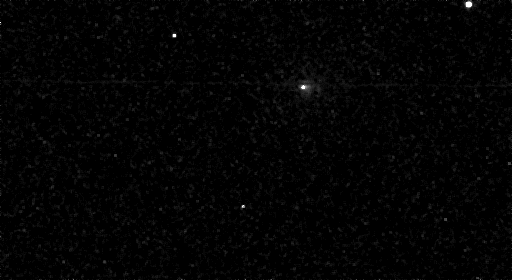
NASA also plans to share observations of the comet from other ongoing missions, though the agency has not yet specified which ones. We do know from previous reporting that two NASA sun-watching missions — the Polarimeter to Unify the Corona Heliosphere (PUNCH) as well as the NASA/ESA Solar and Heliospheric Observatory (SOHO) — had eyes on the comet during its close approach to the sun in late October, so those are both possibilities.
Stay tuned for more.

Brandon Specktor
America is on the brink of losing its measles elimination status

Editors Nicoletta and Hannah here with a duo of stories to catch you up on the state of measles in the United States. (Spoiler: The situation is growing increasingly dire.)
In a news analysis from Live Science contributor Stephanie Pappas, experts explain why America could lose its “measles elimination status” within months. The country eliminated measles back in 2000, meaning the disease was no longer circulating at a sustained level as it does in endemic countries. But to keep that status, a region must not have any ongoing measles transmission lasting over a year. West Texas experienced a major measles outbreak this year that began in January and seeded additional outbreaks in other states, where transmission is still ongoing. If we hit January 2026 and those outbreaks haven’t been subdued, measles will once again be considered endemic to the U.S.
In an opinion piece, epidemiologist Elizabeth Jacobs and virologist James Alwine argue that the measles outbreaks in Canada and the U.S. are a bellwether of the erosion of public health, and that these countries are failing their citizens. “Kennedy must be removed from office,” they write, referencing the U.S. health secretary RFK Jr. “There can be no improvements in public health or vaccination rates as long as he continues his destructive reign.”
To learn more, read Stephanie’s story here and the op-ed here.

Nicoletta Lanese

Hannah Osborne
Comet 3I/ATLAS sneak-peek
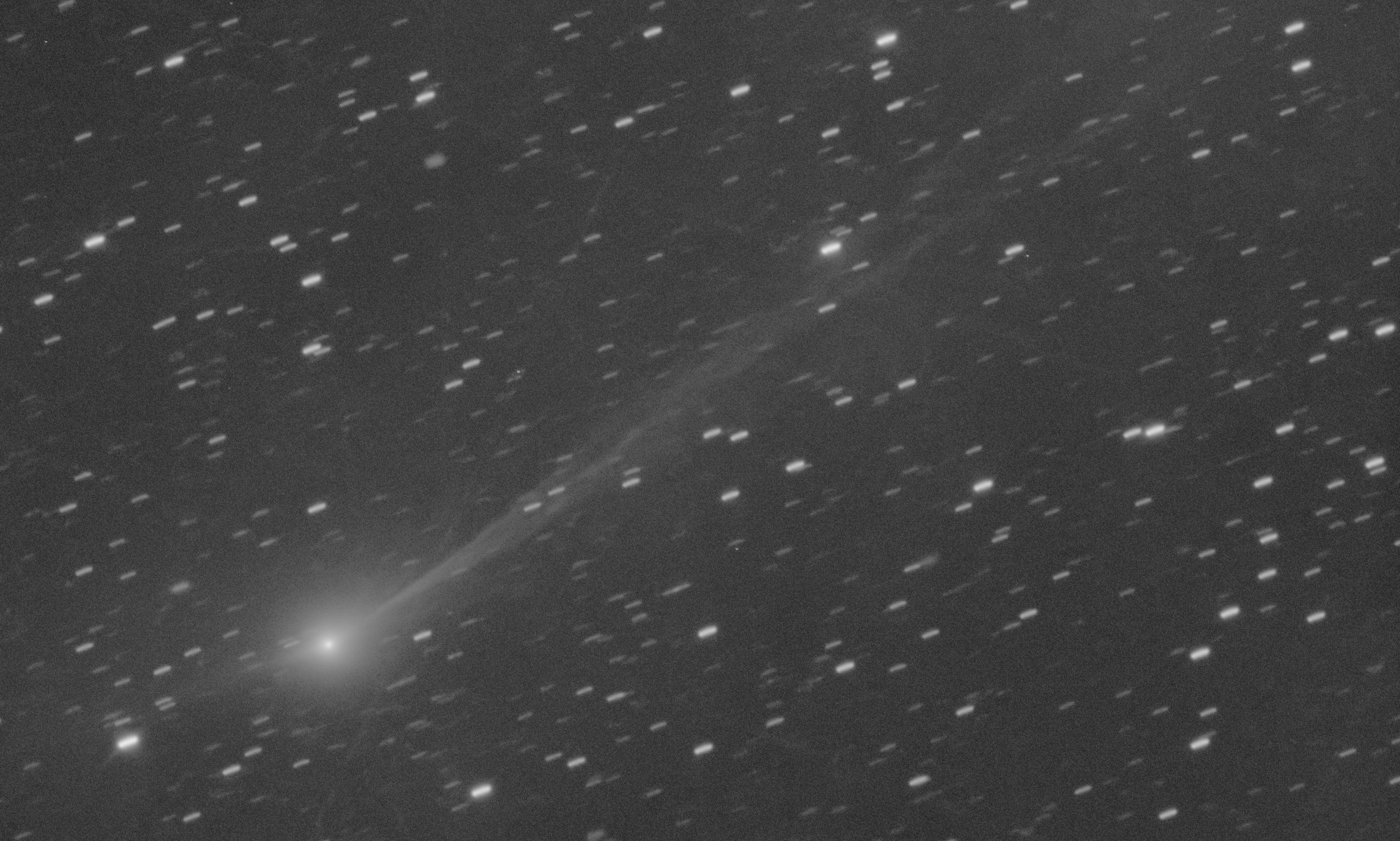
Want a fresh peak at the most famous comet in the world right now, but can’t wait for NASA’s 3 p.m. EST stream? We’ve got you covered.
Here’s a new image taken by astronomer Gianluca Masi, an astronomer and founder of The Virtual Telescope Project. The image was captured by Masi in Manciano, Italy, and shows the comet’s coma, its tail and anti-tail.
‘Godfather of AI’ breaks citation record

Scientists like to be cited — being referenced in future research articles is a key indicator of their work’s impact on future discoveries.
So machine-learning trailblazer Yoshua Bengio could be pleased to have made a major record this week, becoming the first person to be cited more than a million times on Google Scholar for his contributions to artificial intelligence research, Scientific American reports.
But Bengio has far more on his mind than academic achievement. What keeps him up at night is curtailing the dangerous uses of AI made possible by his own research.
You can read the interview I had with him last year for more.
Relativity at its breaking point
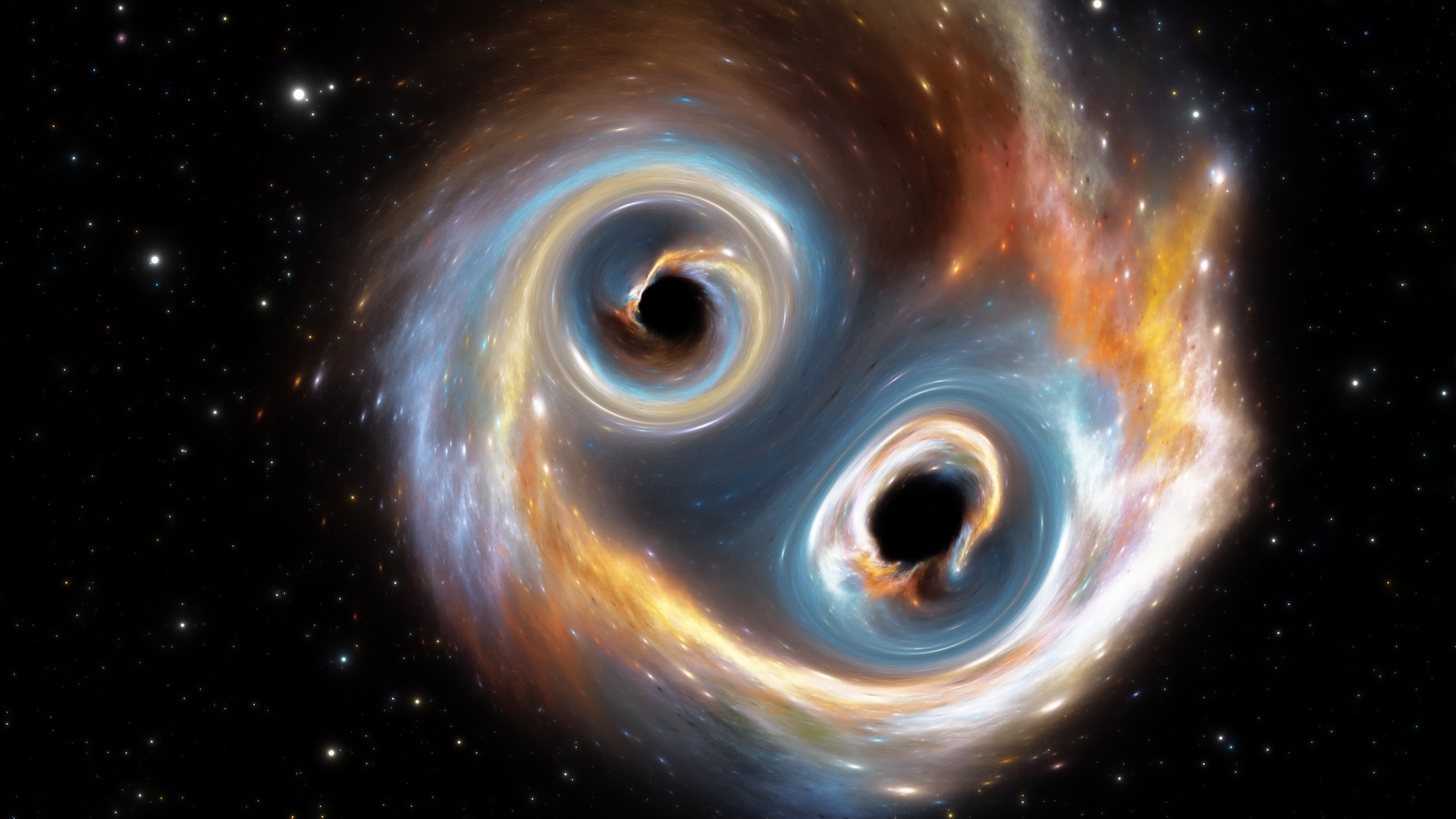
In 2023, scientists detected a gravitational wave signal they thought was impossible — a sequence of space-time ripple coming from two black holes deemed too massive to form by the direct collapse of stars.
And yet form, and later merge, these black holes did. Now, by teasing apart the signals and simulating how the space-time singularities came to be, physicists may finally have an answer for how the black holes managed it. The solution just happens to test Einstein’s theory of general relativity at its most extreme limits.
Read the full story by Live Science contributor Andrey Feldman here.
I’d like to kiss you monkey man

If comet 3I/ATLAS really is revealed to be an alien probe, I may be kissing my credibility as a comet journalist goodbye. But did you know that the practice of kissing far predates humans?
By pairing a Bayesian model with observations of various modern-day primates pressing lips, scientists have estimated that kissing first evolved in the common ancestor of large apes sometime between 21.5 million and 16.9 million years ago.
With all that said, it’s far from clear how much our human ancestors smooched across the centuries — even in modern humans only about half of cultures engage in it.
Check out the full story by Live Science contributor Clarissa Brincat here.
NASA comet 3I/ATLAS announcement today
Good morning, science boys and girls. We’re back with yet another day of science news as NASA prepares to release some of the best-quality images yet of comet 3I/ATLAS.
The comet has been capturing an enormous amount of attention recently. Some of it is likely unearned (you know it’s almost definitely not aliens, right?) and some definitely a big deal (the more than 7 billion-year-old space snowball is a fascinating window across cosmic time and space).
We’ll be covering the event live as it happens, so if we’re wrong and little green men really are hopping around on it, we’ll be the first to tell you.

Ben Turner
NIH terminates funding for hundreds of trials

Tia here with an update on the state of clinical trials in the U.S.: Funding cuts by the Trump administration have halted 383 clinical trials, or about 1 in 30 funded by the National Institutes of Health, a new study in JAMA Internal Medicine has found.
Most of the terminated trials were in early phases, according to a summary of the new study in American Journal of Managed Care. But that still resulted in 74,000 enrolled patients being removed from trials.
The biggest funding cuts came from the National Institute of Allergy and Infectious Diseases (NIAID), due in large part to $500 million in mRNA vaccine research being halted in August.
That won’t be a surprise to those who have followed public health news. Vaccine skeptic Robert F. Kennedy Jr. now heads the Department of Health and Human Services, and has taken several steps to discredit and hamper vaccine uptake and development.
While the administration has said only mRNA vaccines are in the crosshairs and that other uses of mRNA technology are unaffected by the funding cuts, “the industry doesn’t trust that,” Jeff Coller, the Bloomberg distinguished professor of RNA biology and therapeutics at Johns Hopkins University, told health editor Nicoletta Lanese in an interview in August.
That’s a real pity, because mRNA technology has enormous potential, from attacking hard-to-treat, deadly cancers to curing genetic diseases, Nicoletta reported in October.

Tia Ghose
Goodnight from across the pond
It’s goodbye from the Live Science staff on the U.K. side. We’ll leave you in the ever-capable hands of our U.S. colleagues for more posts, commentary and breaking news updates.
The Crying of Launch Complex 39

For many amateur astronomers, just taking a picture of a comet or a planet is a great find. But when Scott Tilley clocked off from his day job this year, he uncovered a vast network of puzzling radio signals being shot into space by U.S. government-run Starlink satellites.
It sounds like the setup for a Pynchon novel, but as Harry outlines, it’s all very much true.
Here’s what he had to say about the strange signals:
“Amateur astronomer Scott Tilley discovered the new signals while accidentally monitoring the wrong radio wavelengths. What’s really weird is that the signals seem to be deliberately using frequencies normally reserved for “uplinking” by satellite operators. But they are actually being used for “downlinking,” or sending messages back down to Earth, which not only goes against international regulations but could also potentially disrupt other spacecraft around them.
Not much is known about why they might be doing this or how widespread it is, and we may never know the full story due to the secretive nature of these satellites. Earlier in the year, I also wrote an in-depth report on how private satellites, like Starlink, are emitting radio pollution that overlaps with frequencies used by radio astronomers. If this problem gets worse, it could majorly impact our ability to study the cosmos, experts say.”
You can read the full story here.
Comet 3I/ATLAS’s tail as old as time

We can’t let even half a day go by without a fresh update on 3I/ATLAS at the moment. Senior staff writer Harry has published a write-up on this breathtaking shot of the comet, which was captured over the weekend by astrophotographer Satoru Murata as it photobombed a distant galaxy.
Some of the comet’s now iconic features, such as its green glow and its tail and anti-tail, are clearly visible in the photo, and it should be more than enough to whet our appetites ahead of NASA’s big reveal of its 3I/ATLAS images tomorrow.
You can read the full story here.

Ben Turner
A thousand years of solartude

New climate modelling suggests that global warming-fueled heatwaves will continue for 1,000 years after we hit net zero (if we hit net zero), the Guardian reports.
Researchers in Australia simulated heatwaves in a hypothetical net zero world, in which the amount of greenhouse gases humans emit are offset by the amount absorbed from the atmosphere — something many scientists hope for and many countries, in theory, support.
The team found that heatwaves will be more severe and more frequent the longer it takes us to reach net zero. This isn’t really a surprise, given that we know greenhouse gas emissions trap heat in the atmosphere and warm up the planet.
However, the fact that it could take at least 1,000 years for heatwaves to return to preindustrial levels, even after we get our emissions in check, is a tad ominous for future generations.
“The thing with net zero and heat waves is: we’re damned if we do, but we’re completely stuffed if we don’t,” study lead author Sarah Perkins-Kirkpatrick, a climate science professor at the Australian National University, told the Guardian. “We’re already locked into a certain amount of warming.”
It’s quantum o’clock

Researchers have built a teeny tiny quantum clock that requires more energy to read than run.
A team led by scientists at the University of Oxford recently explored timekeeping at the quantum level and its thermodynamic cost. In their findings, published last week and announced yesterday, the scientists describe creating the clock from single electrons that jump between two regions in the nanoscale realm — with each leap acting as the ‘tick’ of a traditional clock.
In a classic quantum quirk, the researchers found that the energy needed to read the clock far exceeded the energy required to run the thing, suggesting measurement costs in quantum physics are more significant than previously thought.

Patrick Pester
Ignore your deadlines. Do this crossword instead
Got some important work to do that’s being hamstrung by the Cloudflare outage?
Maybe it’s more important you test your knowledge with this crossword instead. It’s all important science trivia, so you can tell your boss you’re upskilling.
Cloud down
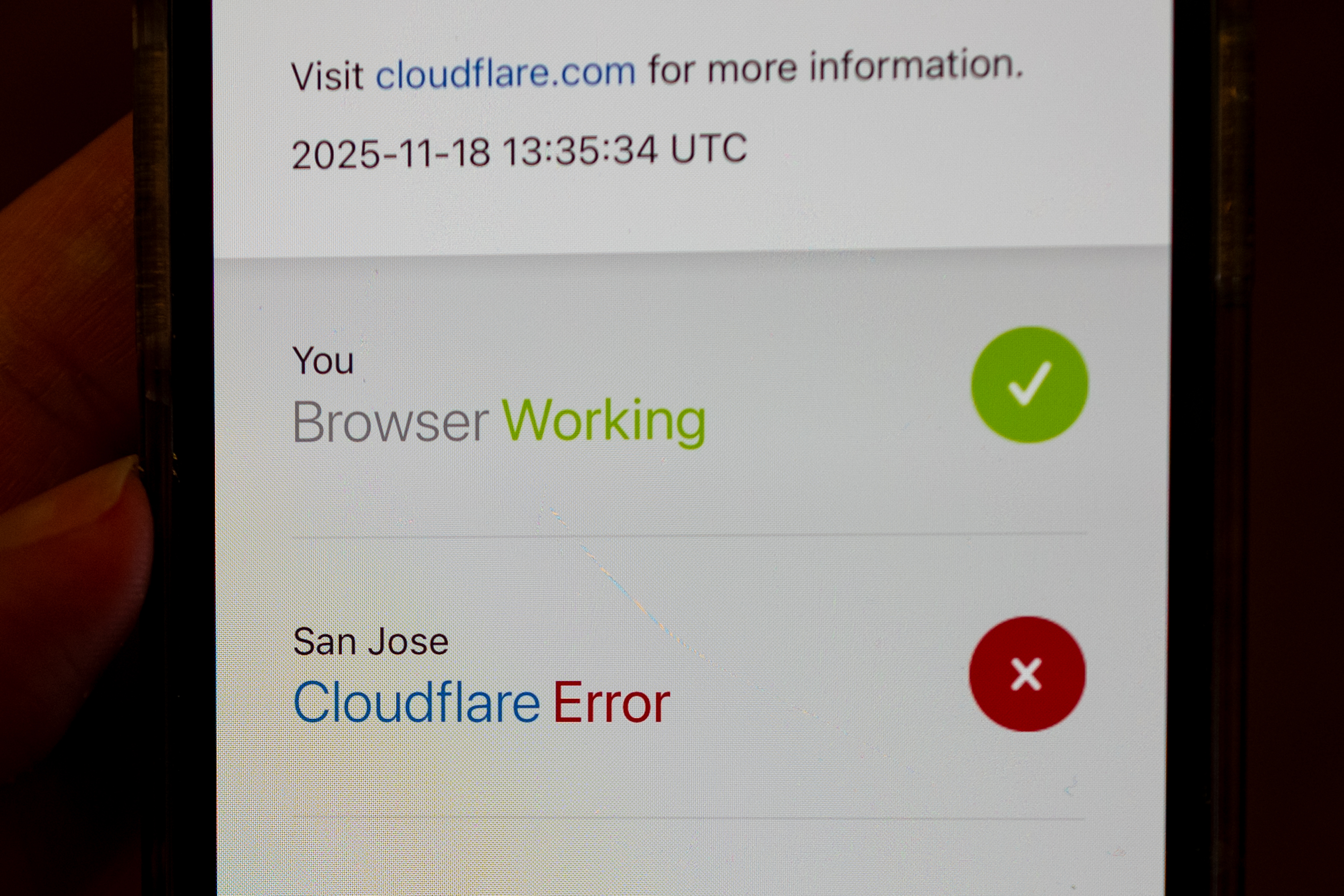
An ongoing outage to Cloudflare, a US company which defends millions of websites against hacking attacks, has brought down vast swathes of the web, including X and OpenAI, today.
Company staff are still investigating what caused the crash.
“We saw a spike in unusual traffic to one of Cloudflare’s services beginning at 11:20 UTC. That caused some traffic passing through Cloudflare’s network to experience errors,” the company wrote in an emailed statement. “We do not yet know the cause of the spike in unusual traffic. We are all hands on deck to make sure all traffic is served without errors.”
Once they’ve addressed the errors, Cloudflare staff will turn to investigating the cause of the “unusual spike in traffic.” Could it be yet another AI-driven cyberattack? Cloudflare writes that it will post updates to cloudflarestatus.com and more in-depth analysis to blog.cloudflare.com.
Until then, Live Science is still online, so where else do you need to go?
And you think you have family drama?
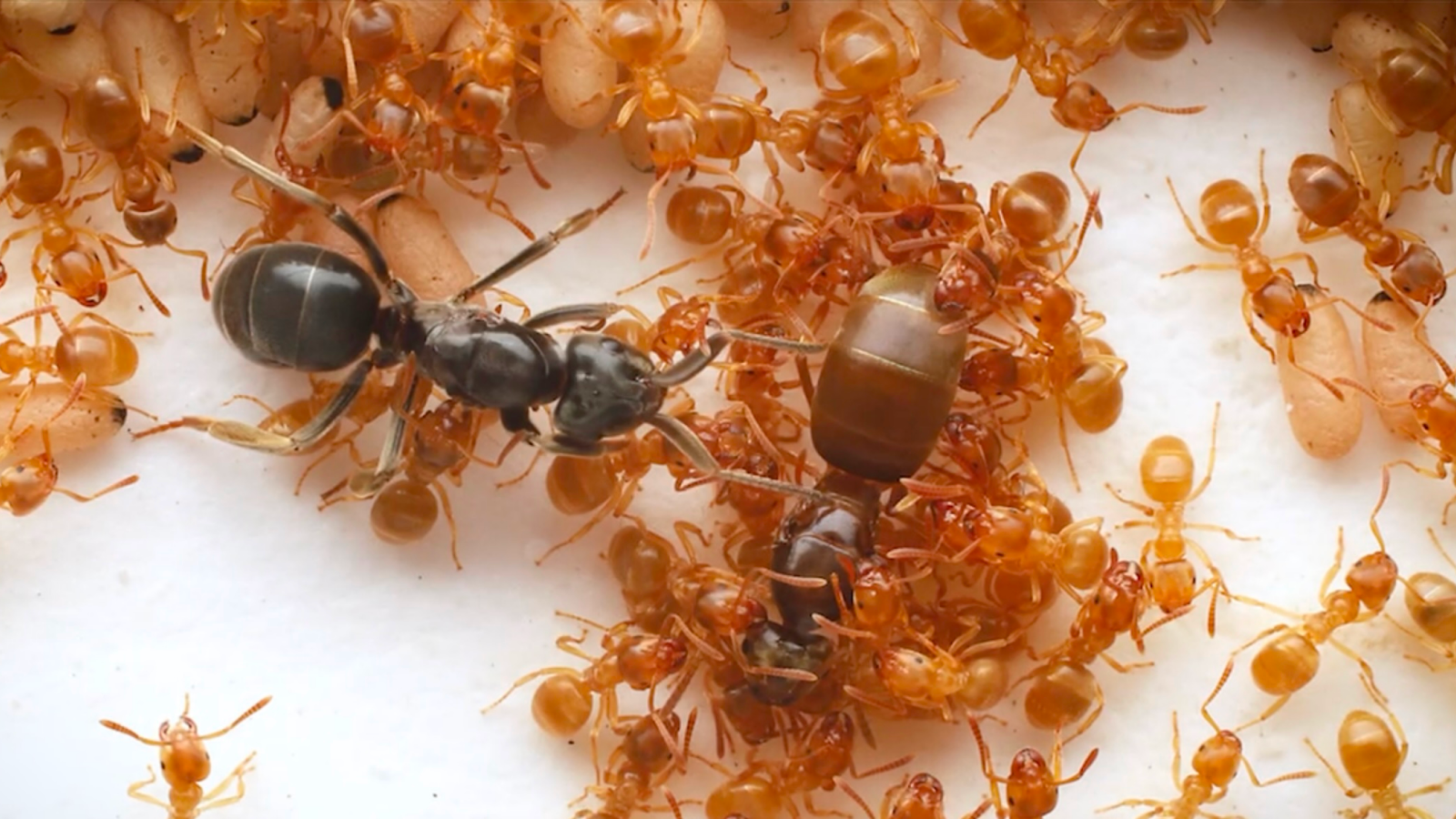
With Thanksgiving and the holiday season both around the corner, many of us are already preparing for some raucous family get-togethers.
But no matter how riotous we humans can be, nothing compares to the activities of the worker ants highlighted by this recent study. After being tricked by the pheromone spray of a parasitic queen, some ant species band together to dismember their mother and enable the imposter to usurp the throne for herself.
You can read all the gory details in the full story here.

Ben Turner
Countdown to NASA’s new 3I/ATLAS images

Yesterday, we wrote (at length) about the potential release of NASA’s long-awaited comet 3I/ATLAS images. Well, just a reminder that these are coming tomorrow.
NASA will host a live news teleconference on Wednesday (Nov. 19) at 3 p.m. EST. The images are expected to be the clearest yet of comet 3I/ATLAS, and should help scientists learn more about the interstellar visitor.
Nosy Neanderthals
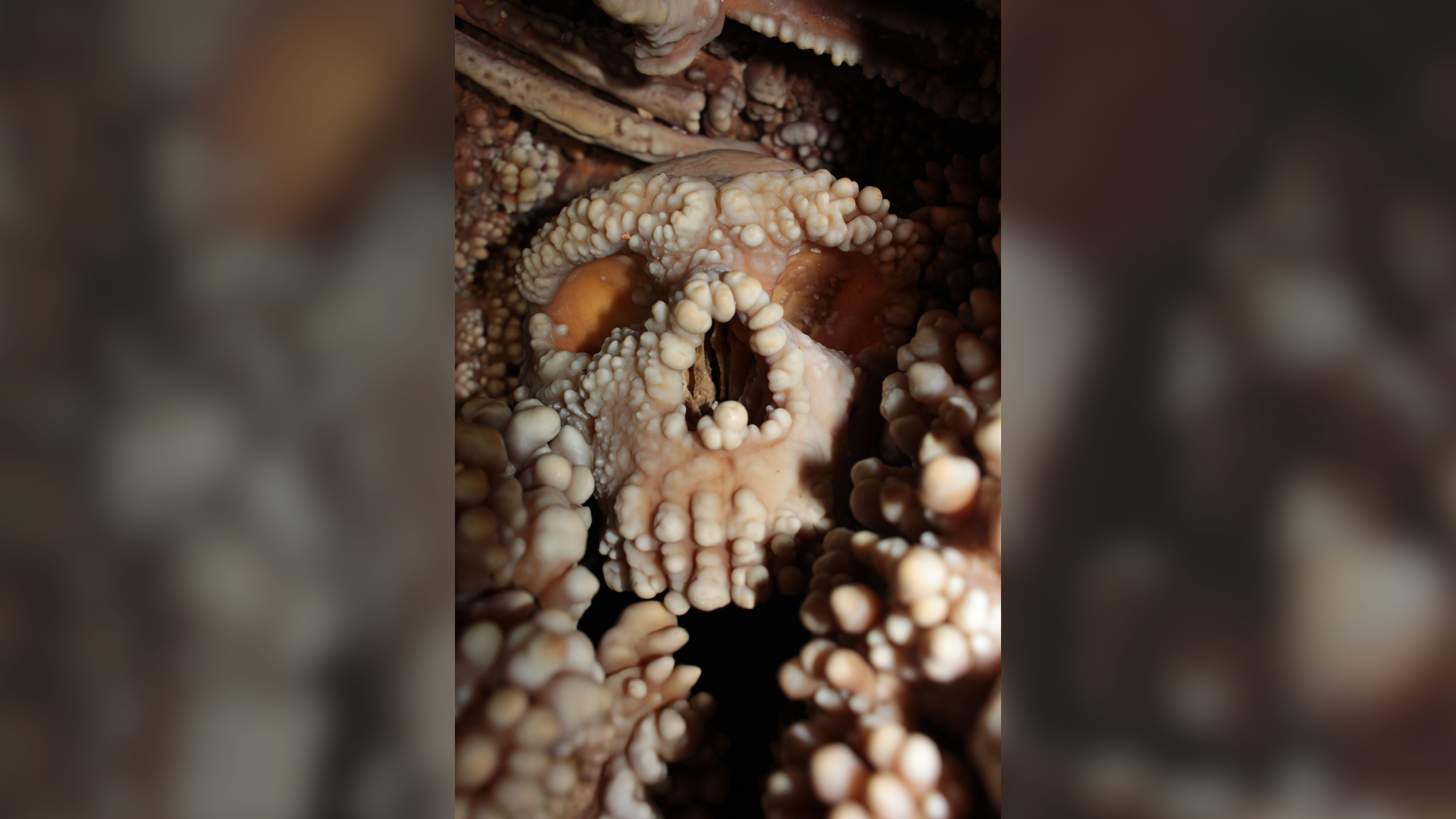
Good morning, science fans! Patrick here to kick off another day of our science news blog coverage. I want to start with a story about Neanderthal noses, which Live Science’s Kristina Killgrove reported on yesterday evening. Researchers re-examined perfectly preserved Neanderthal nose bones, and discovered their sizeable schnozzes weren’t evolved for the cold.
The new study involved taking a fresh look at the “Altamura Man,” which is an exceptionally well-preserved Neanderthal skeleton covered in a thick layer of calcite, sometimes called “cave popcorn.” The researchers’ findings suggest that the size of Neanderthal noses might not have had anything to do with living in cold temperatures.
You can read the full story here.

Patrick Pester
NASA sets date to share 3I/ATLAS images
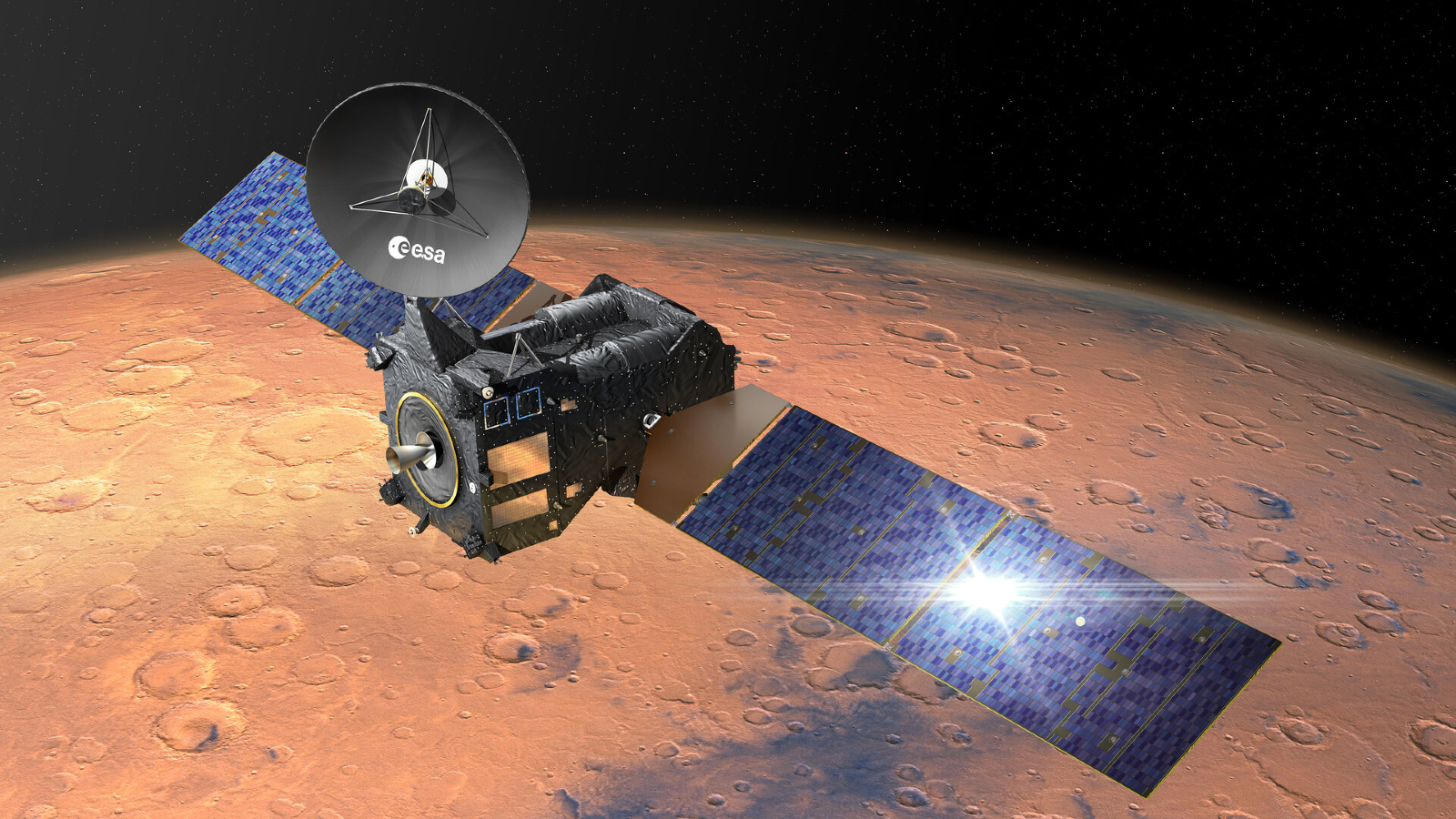
Earthlings eager to see NASA’s newest images of the interstellar comet 3I/ATLAS will have to wait a few more days. The space agency just announced a live image viewing event scheduled for Wednesday (Nov. 19) at 3 p.m. EST.
During the event, NASA will share never-before-seen images of the interstellar comet taken during its close approach to Mars in early October. The U.S. government shutdown, which lasted from Oct. 1 to Nov. 12, prevented the agency from releasing these images until now.
Space and physics editor Brandon Specktor shared the details on how to watch, and why it matters, in his full story here.
Woman versus goose
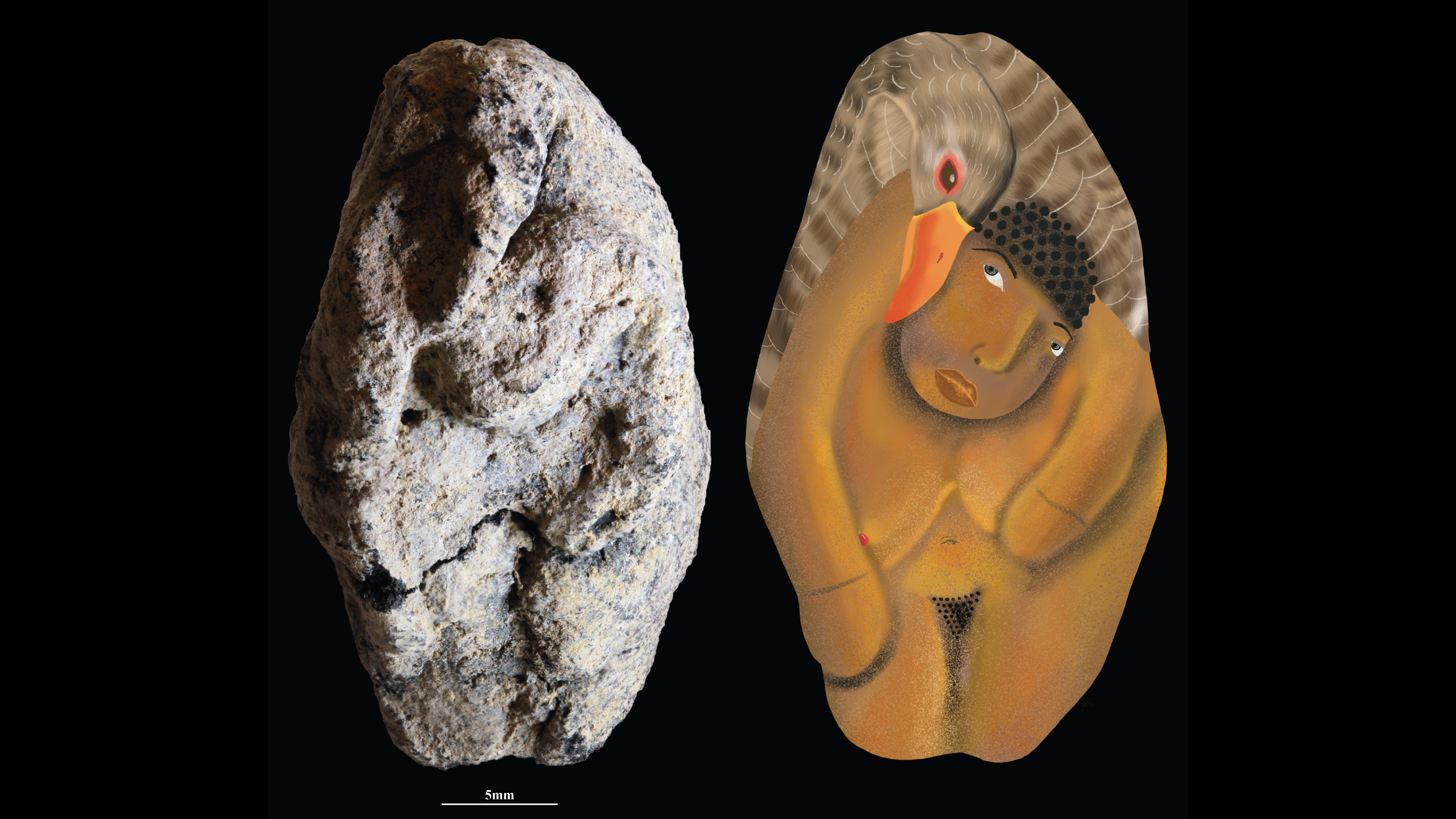
A 12,000-year-old clay figurine unearthed in Israel may depict a goose attempting to mate with a squatting woman, archaeologists say.
Staff writer Kristina Killgrove reported on the unusual figurine, which may be the oldest representation of an animal and a human interacting.
But why did the sculptor depict this event, and what does it say about the Natufians, the ancient culture that crafted the object? You can read the full story here.
Dementia more deadly than heart disease?

Dementia is now more deadly than heart disease — at least in Australia. The new trend reflects dramatic improvements in health care which mean people live longer in general, Lauren Moran, the head of mortality statistics at the Australian Bureau of Statistics, told the Australian Broadcasting Corporation.
“People are now more likely to live to an age where they have a higher risk of developing dementia,” Moran said.
Whether Australia is a harbinger for the rest of the world remains to be seen. In the U.S., for instance, heart disease remains the top killer, closely followed by cancer. Alzheimer’s disease is the sixth-leading cause of death, per the Centers for Disease Control and Prevention.
Dueling climate change impacts
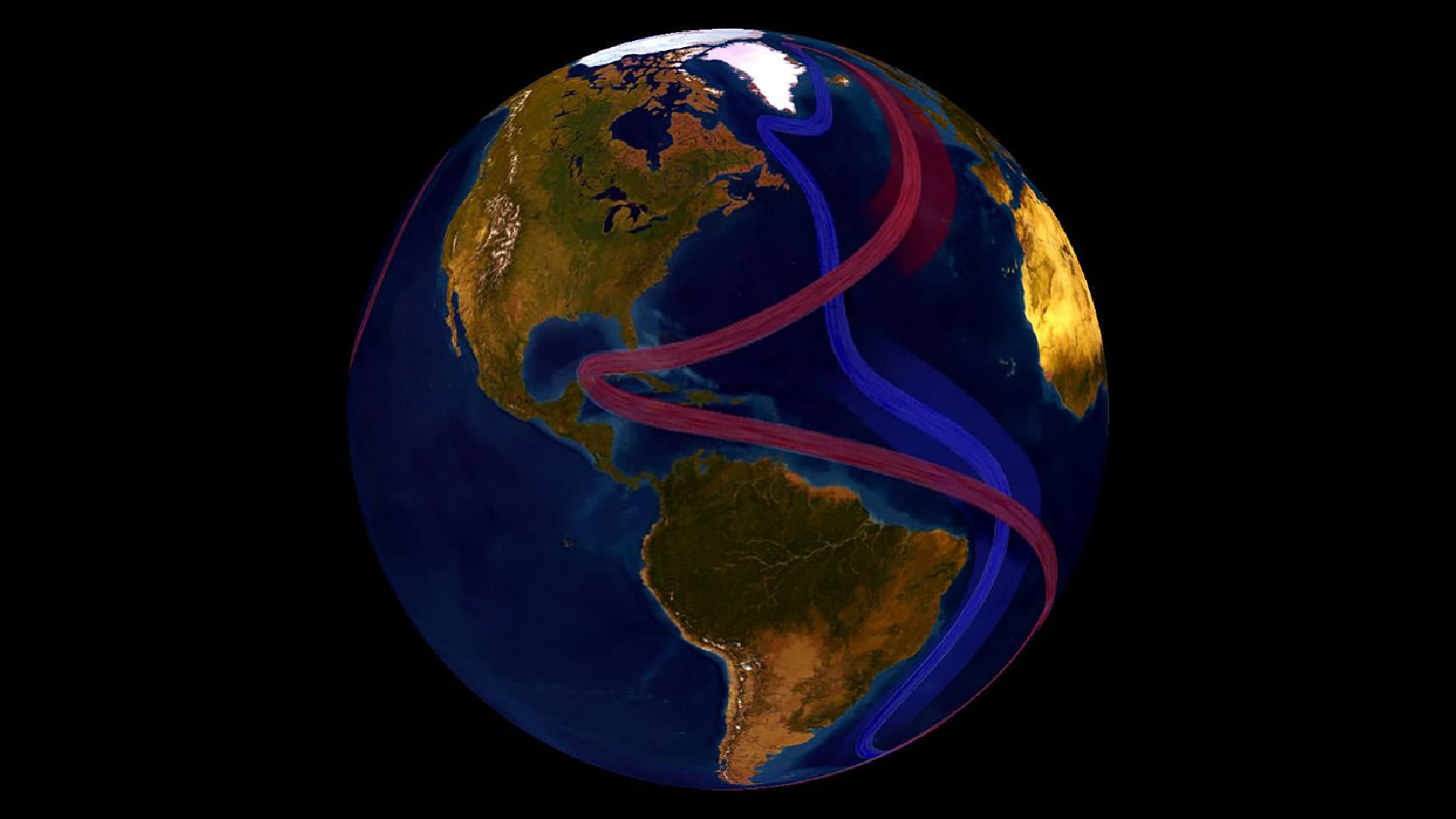
Tia here with news of dueling climate change impacts. A key Atlantic Ocean current system, the Atlantic Meridional Overturning Circulation (AMOC), could be collapsing, due in large part to climate change.
Meanwhile, climate change is also fueling the rapid melt of Antarctic ice.
Yet the melting of the West Antarctic ice sheet, which some climate scientists say is “all but inevitable” could have a surprising side effect — staving off the AMOC collapse, New Scientist reports.
Still, the ice sheet melting would be catastrophic for sea levels, and the AMOC would still decline by 60% and take 3,000 years to bounce back to its previous strength, according to new research.

Tia Ghose
Three more Chinese astronauts stranded

Three more astronauts are stranded in China’s Tiangong station following the return of their previously stuck colleagues, Senior Staff Writer Harry reports.
The latest trio — Zhang Lu, Wu Fei and Zhang Hongzhang — are the crew of the Shenzhou-21 mission, whose return capsule was taken home by the Shenzhou-20 crew following a potential space debris collision that rendered their original capsule inoperable.
The development could highlight a potential flaw in China’s space protocols that could put astronauts needlessly at risk.
You can read the full story here.
That’s all for today folks
We’re signing off from the U.K. side now. We’ll hand you over to our U.S. colleagues now for updates from Live Science, science across the web, and maybe even NASA if they choose to drop comet images while we’re off the clock. See you all tomorrow!
3I/ATLAS’s trajectory narrowed down ten-fold

Since its initial discovery in July, astronomers have answered many questions about what 3I/ATLAS is made of and where it could have come from in our galaxy. Yet, due to insufficient observations, where it’s heading hasn’t been entirely clear.
Now, thanks to data collected by the European Space Agency’s (ESA) ExoMars Trace Gas Orbiter during the comet’s flyby of the Red Planet, scientists have improved their estimates of 3I/ATLAS’s trajectory ten-fold.
The ESA is hoping to repeat the trick with its Jupiter Icy Moons Explorer (JUICE), which will get a good look at 3I/ATLAS later this month.
You can read Harry’s full story here.
Why are astronomers interested in 3I/ATLAS?
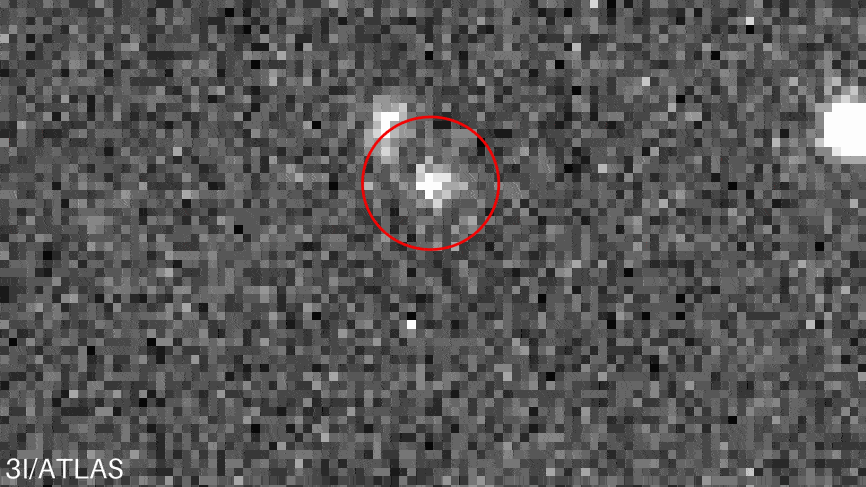
While it is indeed an interstellar visitor from beyond our solar system, most astronomers are confident that 3I/ATLAS is just a normal comet.
Well, normal in the sense that it’s natural. 3I/ATLAS is actually pretty amazing as comets go, being the oldest ever seen and the most massive of its kind, not to mention only the third interstellar object ever recorded.
This means that researchers will carefully study new images of the comet for clues to its makeup, origins, and a better understanding of the journey it took to arrive at our cosmic backyard.
Comets heat up as they fly closer to stars, causing ice on their surface to sublimate into gas, which researchers can then detect and study. Previous observations have already revealed that comet 3I/ATLAS appears to be unusually rich in carbon dioxide, with potentially a thick irradiated crust from billions of years of exposure to cosmic rays.
The comet’s irradiated nature could make it more difficult to decipher the properties of its material that would otherwise reveal more about the conditions of its home star system. Still, researchers still have a lot to learn about interstellar comets, and just having more data on this one is as good a start as any.
Other images taken by HiRISE

HiRise has imaged vast areas of the Martian landscape in unprecedented detail, according to NASA. Check out the HiRise website, hosted by The University of Arizona, to scroll through hundreds of previous HiRise images.
What is HiRISE?
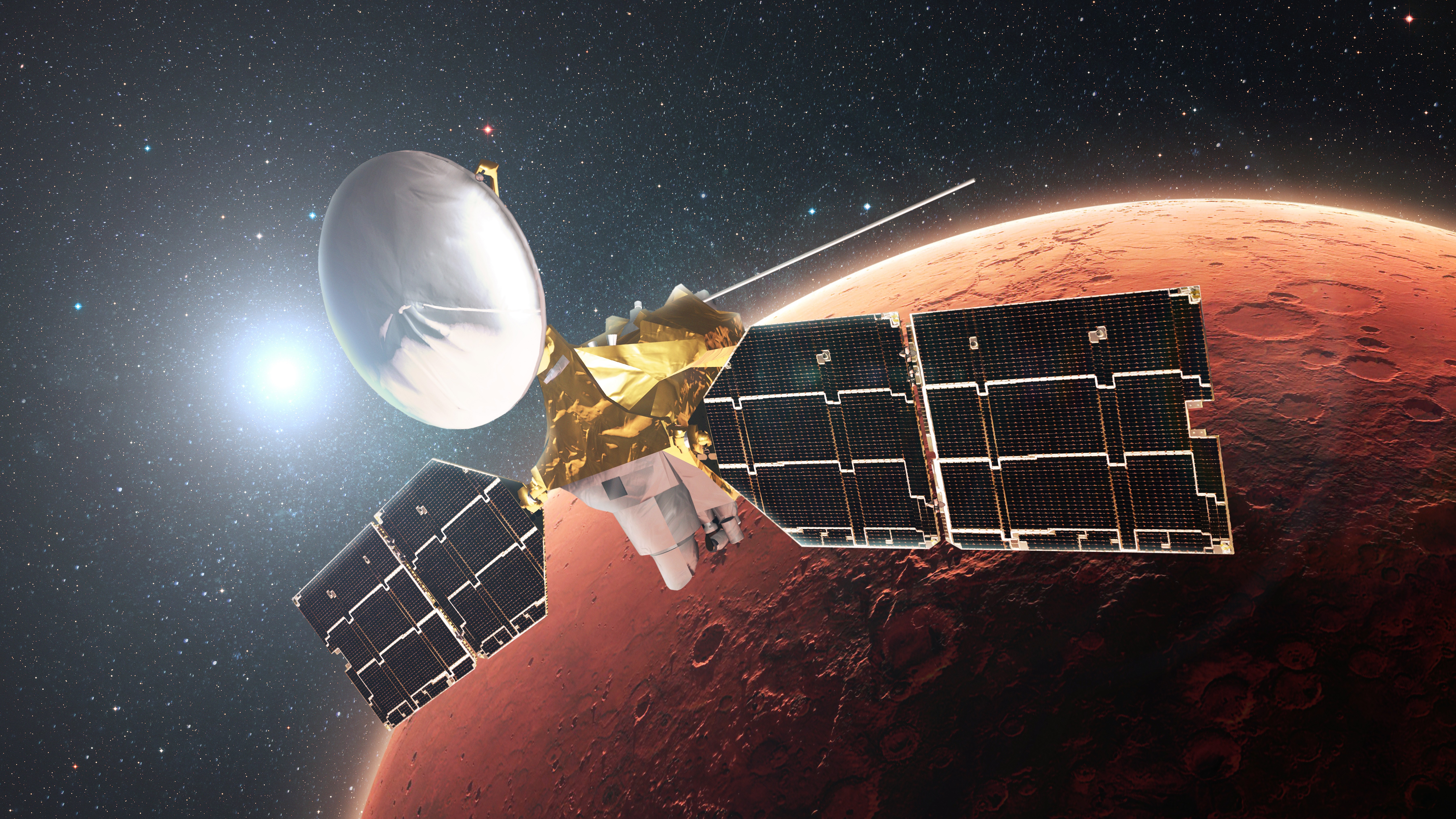
The as-of-yet unreleased comet 3I/ATLAS images were taken by the High Resolution Imaging Science Experiment (HiRISE) aboard NASA’s Mars Reconnaissance Orbiter. The orbiter has been flying around Mars since 2006, searching for signs of water on the Red Planet. The HiRISE camera managed to get images of comet 3I/ATLAS as it zoomed past Mars in early October.
The images are expected to be the highest-resolution images of comet 3I/ATLAS yet, and even clearer than the Hubble Space Telescope’s comet snaps taken in July, the New York Post has reported.
Here’s a selection of some of our 3I/ATLAS stories so far

Patrick Pester
Everything you need to know about 3I/ATLAS

So what is 3I/ATLAS? And why do people care?
3I/ATLAS, which was first discovered in early July, is the third interstellar object ever found in our solar system. That means it doesn’t come from our cosmic neighbourhood, but from somewhere else in our Milky Way galaxy.
Where exactly in our galaxy the comet came from is unclear — scientists aren’t sure whether it came from the Milky Way’s ‘thin’ disk or its ‘thick’ disk — but depending on its origins it could be more than 7 billion years old, making it more than 3 billion years older than our sun. Tracing 3I/ATLAS’s origins is made even more challenging by its material, which has been transformed by billions of years of exposure to cosmic rays.
Telescope observations suggest the comet is roughly 7-mile-wide (11 kilometers) and zooming at more than 130,000 mph (210,000 km/h). Having passed perihelion, or the closest point to our sun, roughly two weeks ago, 3I/ATLAS is now zipping toward its closest point to Earth on Dec. 19.
The exotic comet has many peculiar properties, from its chemical composition to its large size. This, alongside radio signals coming from it that are typical of all comets, has fuelled a frenzy of speculation that the 3I/ATLAS is an alien probe.
That’s almost certainly not the case, but it doesn’t mean that astronomers aren’t excited to study it. Investigating the comet could yield fresh insights into the conditions around other stars, our early galaxy, and the vast frontier of interstellar space.
NASA set to share best images of comet 3I/ATLAS yet
Good morning, science fans. We’re back with more updates on the comet 3I/ATLAS. Following the end of the U.S. government shutdown, we’re seeing reports that NASA is set to release some of the best-quality images yet of the comet.
The images were taken by the HiRISE camera aboard NASA’s Mars Reconnaissance Orbiter, and could have significantly better resolution than those by the Hubble Space Telescope on July 21, 2025.
We’re getting to work on what all of this could mean for the rapidly-brightened comet, which is roughly 7-miles (11 kilometers) wide, more than 7 billion years old, and traveling at 130,000 mph (210,000 km/h) as it sheds its highly-irradiated coma across our solar system.
That’s more like it! Marvelous new image of interstellar Comet 3I/ATLAS, taken by photographer Satoru Murata before dawn this morning, captures intricate structure in its tail(s). On the right you can also see galaxy NGC 4691. https://t.co/7rP3S4ysa5 pic.twitter.com/KrjhOSCgLcNovember 16, 2025

Ben Turner

